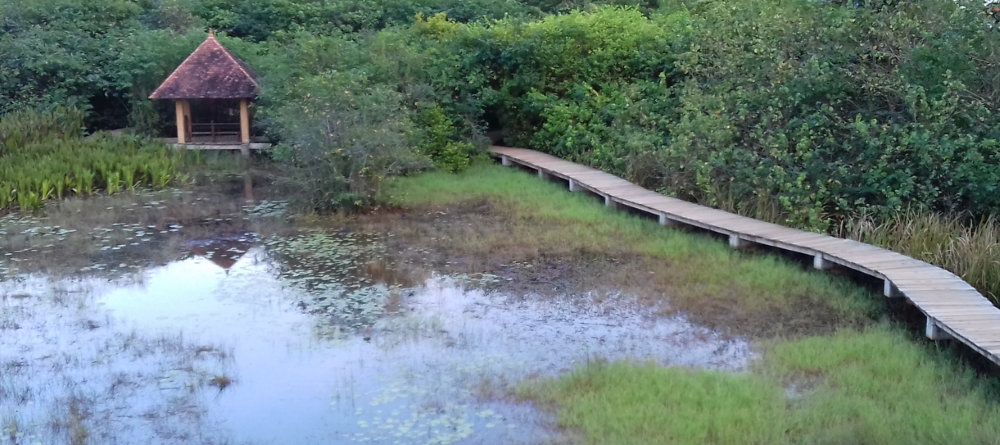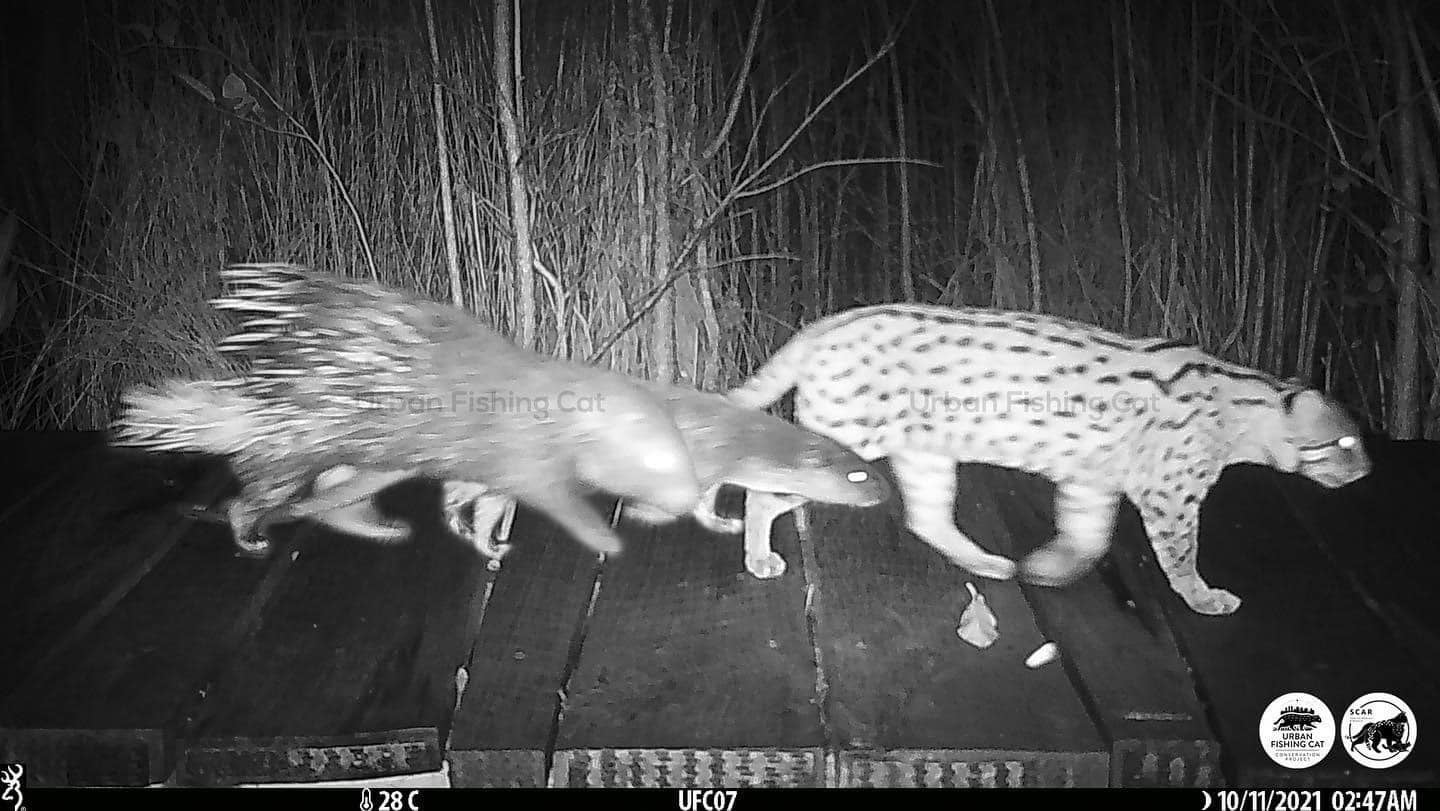 Beddagana Urban Wetland Park. Photo: Nadeera Rajapakse
Beddagana Urban Wetland Park. Photo: Nadeera Rajapakse
Renowned naturalist Sir David Attenborough has brought attention to a global-scale man-made disaster, emphasizing climate change as “our greatest threat in thousands of years.". The acclaimed conservationist highlighted a powerful argument that our impact on climate could lead to the eventual vanishing of much of life on our planet and that this was an unfortunate result of our disconnect from nature.
Urbanization is a leading cause of ecosystem loss in metropolitan regions, which in turn exacerbates climate change and undermines the provision of critical ecosystem services for city dwellers. As the old adage goes, the solution to a problem is in the problem itself. With an estimated two-thirds of the global population expected to live in cities by 2050, creating nature reserves in urban settings and helping people access them has never been more important for the well-being of humanity.
The World Bank funded Metro Colombo Urban Development Project (MCUDP)) saw the state officially recognize the city’s remaining freshwater wetlands as an invaluable asset to protect. In addition to engineered solutions to relieve the city of its floodwaters the MCUDP set a unique example by prescribing the remaining urban wetlands in metro Colombo as an indispensable component of the city’s overall flood management strategy.
The project presented evidence that losing all of Colombo’s wetlands would cause annual floods that could potentially cost up to 1% of the city’s GDP. In a city where every inch of land is under severe development stress, the project demonstrated a promising ‘wetland use model’ that promotes the wise use and preservation of Colombo’s wetlands. The project financed and set up both the Beddagana Urban Wetland Park and Kotte Ramparts Wetland Park and also technically assisted the Diyasaru Wetland Park. The Parks were outfitted with information centers and safe access for visitors to engage in conservation, recreation, tourism, education, and awareness.
The parks offer a unique ‘wilderness’ experience within the city and are a treat for the senses. Flooded woodlands, grassy marshes, shallow ponds and canals dotted with pink lotuses attract a variety of rare bird species including the colorful blue coot and the wetland mascot. The parks are also home to more furtive species like the elusive fishing cat, the occasional crocodile and otters. Until 2013, these ‘once natural wetlands’ were mere wastelands where solid waste would be routinely dropped or incrementally filled into the area. According to the 2017 Metro Colombo Urban Wetland Management Strategy, in a city that has been steadily growing, Colombo’s wetlands have been slowly succumbing to development pressure, reducing at an estimated rate of 1.2% annually, losing as much as 40% since 1995.
The MCUDP showed beyond a doubt that preserving all that remains of the city’s wetlands is an absolute priority and that robust government investment is needed to ensure its resilience to future climatic shocks. Besides the recreational services, the parks function as centers of excellence for wetland education, cultivating the much-needed environmental awareness and local stewardship in protecting the fragile ecosystems. These wetland parks play a pivotal role in influencing young minds, engaging older citizens and city planners through various communication, education, participation and awareness programs. Guided wetland tours, field workshops, seminars and collaborative research with conservation organizations, universities and private sector, inculcate a culture of care and respect for urban green spaces.
The park also acts as a living lab for school students and university researchers. It offers learning opportunities and research on numerous wetland services that are of enormous value to Colombo, such as flood control, food security, water security, water filtration, micro-climate regulation, and biodiversity conservation. The parks are the primary location for research on ecology and behavior of fishing cats in urban habitats, highlighting much needed scientific information on this elusive mammal, which is currently being used as a focal species for wetland conservation planning. Further, the parks have become popular locations for photography and for families seeking respite from urban living and stress.
While degraded wetlands can be restored, the complex interrelationships between wetland vegetation, their unique soils and water, have evolved there for millennia, and hence impossible to replicate within our lifetime. A widely accepted fact is that protecting, preserving and restoring wetlands is a sound investment in green infrastructure and they must be protected as natural treasures for future generations. With many of us living in urban areas, it is important for policy makers and governments to find ways to narrow the wedge between city dwellers and their natural surroundings by increasing awareness of the role they play in creating livable cities. The COVID-19 pandemic threw this divide into greater contrast and re-ignited long lost interest in the critical value of nature’s protective force. However more action is needed, and hopefully cities like Colombo will continue to make a stronger case for urban wetlands on the global platform.
The Global Facility for Disaster Reduction and Recovery (GFDRR), which also houses a dedicated Global Program on Nature-Based Solutions focused on mainstreaming the type of investments shown in Colombo, supported the project in preparation and implementation.
Additional resources:
- ‘Assessing Benefits and Costs of Nature Based Solutions for Climate Resilience : https://openknowledge.worldbank.org/entities/publication/9ed5cb4b-78dc-42a4-b914-23d71cef24a2
- Integrating Green and Grey: https://openknowledge.worldbank.org/entities/publication/ddda3ed0-096e-59dd-a25d-3de884254eba



Join the Conversation